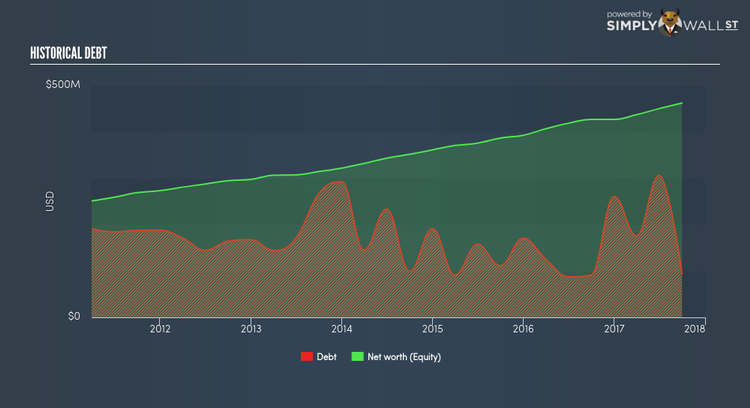Risk Factors You Should Consider Before Investing In Lakeland Financial Corporation (NASDAQ:LKFN)

Improving credit quality as a result of post-GFC recovery has led to a strong environment for growth in the banking sector. As a small-cap bank with a market capitalisation of USD $1.28B, Lakeland Financial Corporation (NASDAQ:LKFN)’s profit and value are directly affected by economic growth. This is because borrowers’ demand for, and ability to repay, their loans depend on the stability of their salaries and interest rates. Risk associated with repayment is measured by bad debt which is written off as an expense, impacting Lakeland Financial’s bottom line. Today we will analyse Lakeland Financial’s level of bad debt and liabilities in order to understand the risk involved with investing in the bank. See our latest analysis for Lakeland Financial
How Good Is Lakeland Financial At Forecasting Its Risks?
Lakeland Financial’s forecasting and provisioning accuracy for its bad loans indicates it has a strong understanding of its own risk levels. If the bank provision covers more than 100% of what it actually writes off, then it is considered sensible and relatively accurate in its provisioning of bad debt. Given its large bad loan to bad debt ratio of 439.5%, Lakeland Financial excessively over-provisioned by 339.5% above the appropriate minimum, indicating the bank may perhaps be too cautious with their expectation of bad debt.
What Is An Appropriate Level Of Risk?
If Lakeland Financial does not engage in overly risky lending practices, it is considered to be in good financial shape. Loans that cannot be recuperated by the bank, also known as bad loans, should typically form less than 3% of its total loans. When these loans are not repaid, they are written off as expenses which comes directly out of the bank’s profit. The bank’s bad debt only makes up a very small 0.28% to total debt which means means the bank has very strict bad debt management and faces insignificant levels of default.
How Big Is Lakeland Financial’s Safety Net?

Lakeland Financial profits from lending out its various forms of borrowings and charging interest rates. Deposits from customers tend to carry the lowest risk due to the relatively stable interest rate and amount available. The general rule is the higher level of deposits a bank holds, the less risky it is considered to be. Since Lakeland Financial’s total deposit to total liabilities is very high at 97.05% which is well-above the prudent level of 50% for banks, Lakeland Financial may be too cautious with its level of deposits and has plenty of headroom to take on risker forms of liability.
Conclusion
Lakeland Financial shows prudent management of risky assets and lending behaviour. It seems to have a clear understanding of how much it needs to provision each year for lower quality borrowers and it has maintained a safe level of deposits against its liabilities. The company’s judicious lending strategy gives us higher conviction in its ability to manage its operational risks which makes Lakeland Financial a less risky investment. Today, we’ve only explored one aspect of Lakeland Financial. However, as a potential stock investment, there are many more fundamentals you need to consider. There are three essential factors you should further examine:
1. Future Outlook: What are well-informed industry analysts predicting for LKFN’s future growth? Take a look at our free research report of analyst consensus for LKFN’s outlook.
2. Valuation: What is LKFN worth today? Has the future growth potential already been factored into the price? The intrinsic value infographic in our free research report helps visualize whether LKFN is currently mispriced by the market.
3. Other High-Performing Stocks: Are there other stocks that provide better prospects with proven track records? Explore our free list of these great stocks here.
To help readers see pass the short term volatility of the financial market, we aim to bring you a long-term focused research analysis purely driven by fundamental data. Note that our analysis does not factor in the latest price sensitive company announcements.
The author is an independent contributor and at the time of publication had no position in the stocks mentioned.

